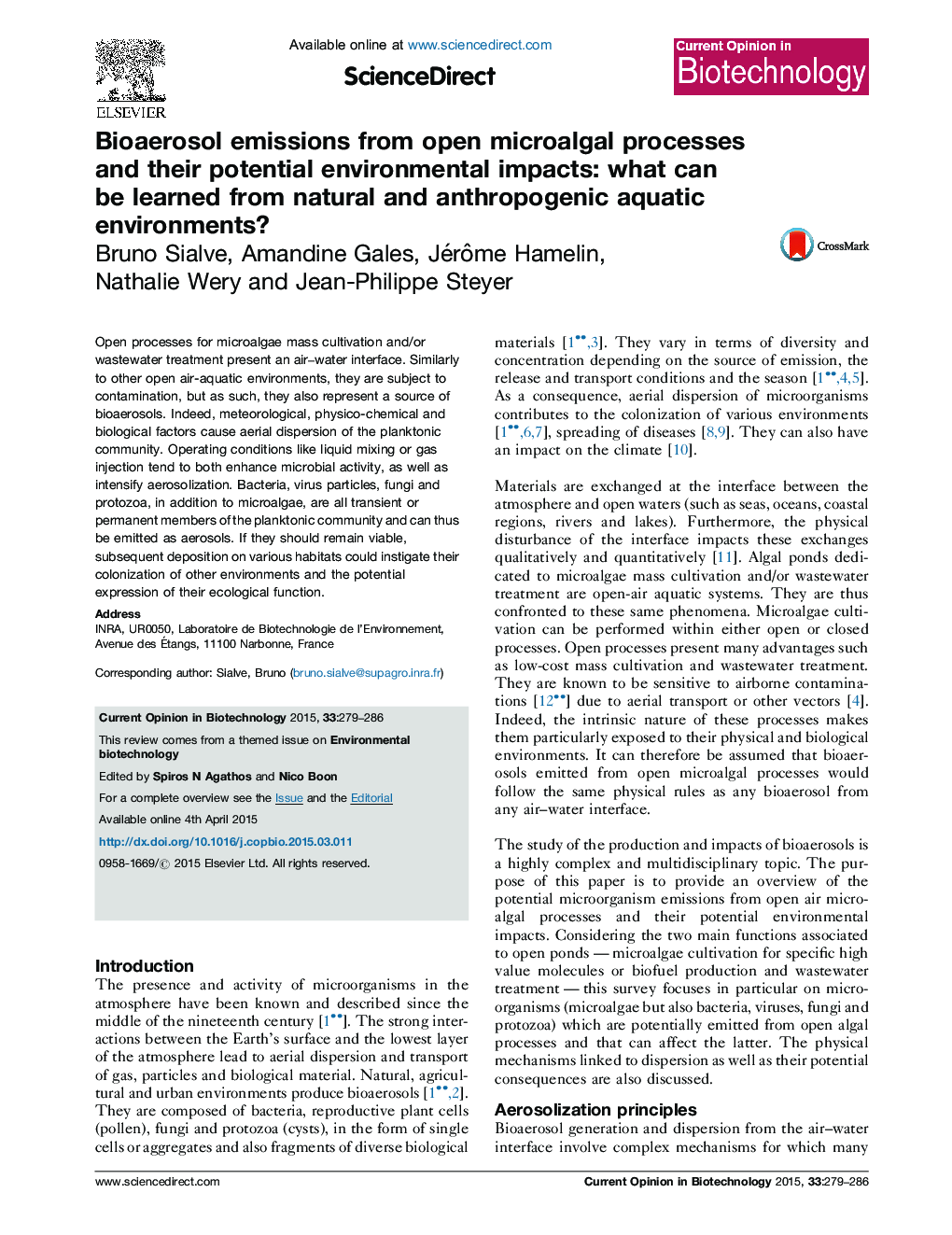| Article ID | Journal | Published Year | Pages | File Type |
|---|---|---|---|---|
| 15593 | Current Opinion in Biotechnology | 2015 | 8 Pages |
•Microbial communities from open water spread to the environment through bioaerosols.•Bioaerosols are sources of contaminations at different spatial scales.•Processes for intensification of algal ponds culture increase bioaerosol emissions.•Aerosolization should be taken into account to design and improve pond management.
Open processes for microalgae mass cultivation and/or wastewater treatment present an air–water interface. Similarly to other open air-aquatic environments, they are subject to contamination, but as such, they also represent a source of bioaerosols. Indeed, meteorological, physico-chemical and biological factors cause aerial dispersion of the planktonic community. Operating conditions like liquid mixing or gas injection tend to both enhance microbial activity, as well as intensify aerosolization. Bacteria, virus particles, fungi and protozoa, in addition to microalgae, are all transient or permanent members of the planktonic community and can thus be emitted as aerosols. If they should remain viable, subsequent deposition on various habitats could instigate their colonization of other environments and the potential expression of their ecological function.
Graphical abstractFigure optionsDownload full-size imageDownload high-quality image (150 K)Download as PowerPoint slide
